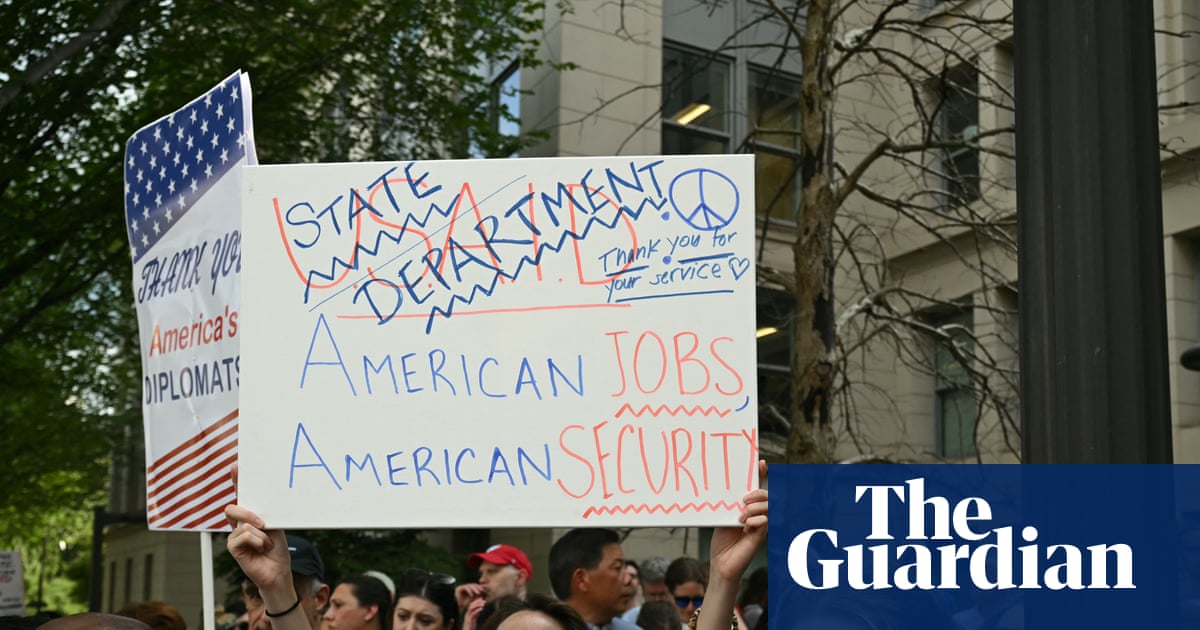The Impact of Recent Changes at the U.S. State Department
The U.S. State Department is undergoing a significant transformation marked by staff layoffs, resignations, and policy shifts. Reports indicate a proposed budget cut of 48%, alongside a reorganization process initiated during the Trump administration. Many workers within the department are expressing their concerns, suggesting that these changes have not only lowered morale but may also have far-reaching implications for U.S. foreign relations and policy effectiveness.
The Layoffs and Morale Crisis
On July 11, over 1,350 employees received Reduction In Force (RIF) notices, accounting for approximately 15% of the domestic workforce. This was made possible after the Supreme Court lifted legal restrictions against the Trump administration’s firings. In total, around 3,000 employees have left the agency, some taking early retirement or buyouts, raising questions about the department’s capacity to execute its mandate effectively.
Michael Rigas, the Deputy Secretary of State for Management and Resources, defended these cuts during a Senate hearing, stating they were informed by an assessment done with undersecretaries. However, this claim has been widely challenged. Long-term State Department employee Jose Mercado, who was laid off after 29 years of service, denounced the process as lacking transparency. Mercado described the decision-making as “directed from the top down” and not reflective of proper procedures, raising concerns about the legality of the layoffs.
Legislative Pushback and Legal Challenges
The American Federation of Government Employees is reportedly preparing legal challenges regarding these layoffs, indicating a growing unrest among the workforce. Employees have expressed feelings of vulnerability and uncertainty, with many apprehensive about future employment within the department. A current policy adviser, wishing to remain anonymous, emphasized that the layoffs disproportionately affected senior employees, veterans, and those with disabilities.
Ideological Shift and its Implications
The political landscape within the State Department has also shifted dramatically, particularly with regard to programming aimed at marginalized communities. Foreign aid and services supporting LGBTQ+ rights, maternal health, and other minority group initiatives have been significantly slashed. This shift is interpreted by many at the department as an alignment with far-right ideologies driven by a young senior adviser appointed during the Trump administration.
Recent reports allege that the department’s annual human rights reports have been redacted to exclude any mention of certain issues that do not align with the administration’s “America First” agenda. Notably, discussions around maternal and reproductive health have been sidelined, impacting the way the U.S. engages with global humanitarian efforts.
The Role of Senior Advisers and Young Political Appointees
One prominent political appointee, Samuel Samson, has raised eyebrows with controversial positions, including his proposal to fund French far-right leader Marine Le Pen. His a recent Substack article criticized European governments for handling immigration and was perceived as a move to promote a nationalist agenda. The normalization of these views within the State Department raises alarms about the implications for foreign policy.
Culture of Fear and Limitations
The atmosphere at the State Department is increasingly characterized by a “keep your head down” mentality, as employees report limitations on whom they can meet and what projects they can pursue. There is a prevailing sense of fear of retribution for speaking out or challenging orders, which is uncommon in previous administrations.
The adviser mentioned that staff meetings now require approval from senior leadership, a stark contrast to the autonomy previously enjoyed. This shift raises concerns, as staffers wield less influence over critical decisions that affect national security and foreign aid.
Long-term Implications for U.S. Foreign Policy
Mercado reflected on the cyclical nature of policy changes that accompany new administrations but lamented the absence of guidance when the Trump administration took office. He emphasized the need for an informed civil service to provide checks and balances, particularly concerning foreign nations with documented human rights abuses.
Lost institutional knowledge, as a result of the significant staff turnover, may undermine the department’s ability to navigate complex global issues. Mercado warned that diminished capacities in the Foreign Service could result in weaker U.S. foreign policy, ultimately posing risks not only to international relations but also to domestic stability.
Concerns from Defense Experts
Remarkably, even some military leaders have voiced critiques of the State Department’s cuts. Gen. Jim Mattis, former Secretary of Defense, informed lawmakers that funding diplomacy significantly reduces the need for military spending. This statement underscores the critical relationship between diplomacy and defense, advocating that effective foreign policy is equally as crucial as military strength.
The State Department’s Proclaimed Justifications
A spokesperson for the State Department defended the cuts as lawful and indicated that they were intended to preserve critical functions within the agency. However, this stance raises more questions than it answers regarding the long-term strategy and vision for U.S. diplomacy and foreign relations.
As these transitions continue, the combination of layoffs, morale issues, and legislative scrutiny presents a complicated picture of the future of the U.S. State Department. The implications of these changes are profound, not only for the employees affected but also for the broader landscape of U.S. foreign intervention and humanitarian efforts.



